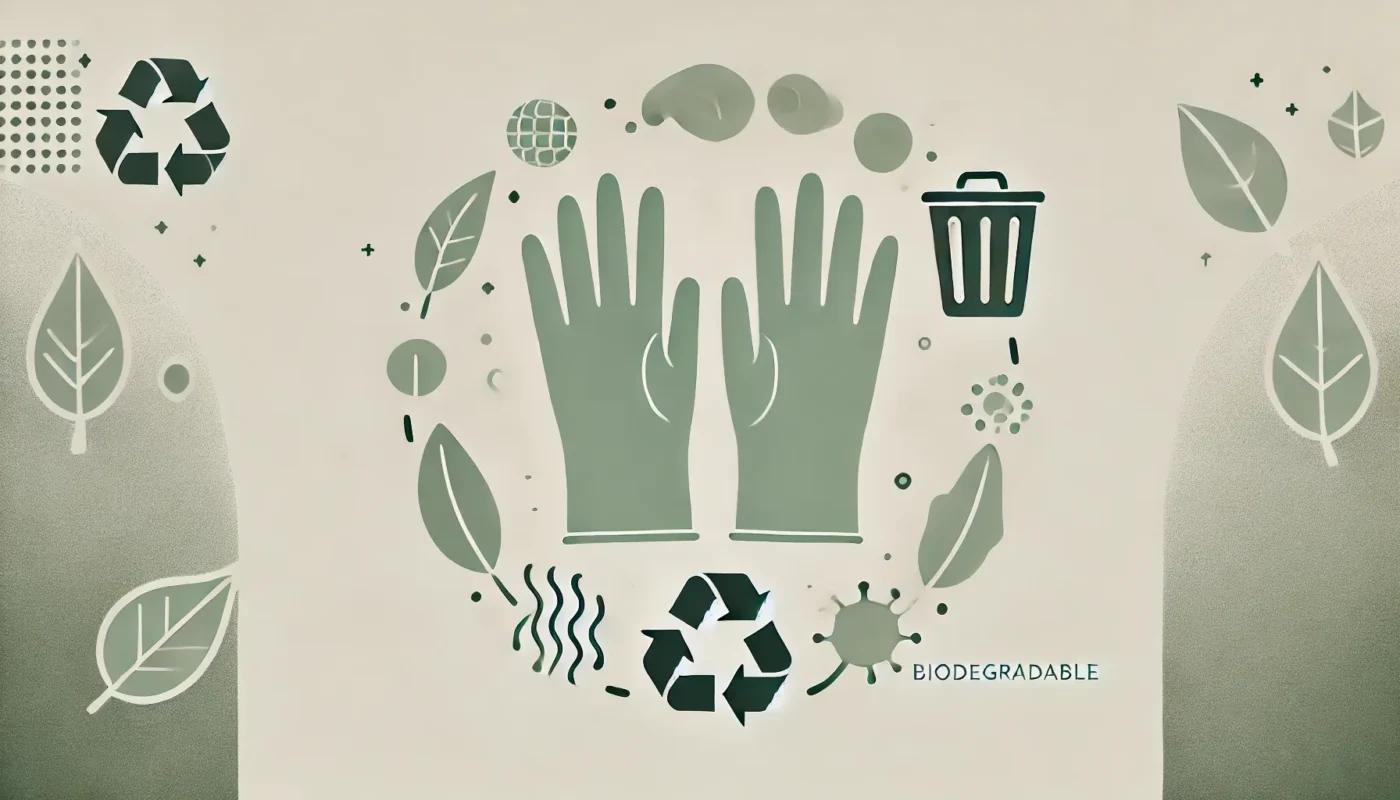A Comprehensive Guide to the Materials Used in Biodegradable Nitrile Gloves
In the quest for more sustainable and environmentally friendly products, biodegradable nitrile gloves have emerged as a significant innovation. These gloves offer the durability and protection of traditional nitrile gloves while being designed to break down more quickly in the environment. In this guide, we’ll delve into the materials that make biodegradable nitrile gloves unique and explore how they differ from their traditional counterparts.
Understanding Traditional Nitrile Gloves
Composition of Traditional Nitrile Gloves
Traditional nitrile gloves are made from synthetic rubber called acrylonitrile-butadiene rubber (NBR). This material is prized for its durability, resistance to chemicals, and elasticity. However, NBR does not break down easily, posing environmental challenges when these gloves are disposed of in landfills.
Environmental Impact
Due to their synthetic nature, traditional nitrile gloves can take hundreds of years to decompose. This slow degradation contributes to the growing problem of non-biodegradable waste, prompting the need for more sustainable alternatives.
The Innovation of Biodegradable Nitrile Gloves
Key Materials in Biodegradable Nitrile Gloves
Biodegradable nitrile gloves are made from the same base material as traditional nitrile gloves—acrylonitrile-butadiene rubber. However, the key difference lies in the incorporation of special additives that enhance the degradation process. These additives are designed to attract microbial activity, accelerating the breakdown of the gloves once they are disposed of in biologically active landfills.
Additives That Promote Biodegradation
- Eco Best Technology (EBT): This is one of the most commonly used additives in biodegradable nitrile gloves. EBT is an organic additive that attracts microorganisms in landfills, leading to the faster breakdown of the gloves into natural elements.
- Enzyme-Enhanced Formulations: Some biodegradable gloves use enzyme-based additives that trigger the degradation process. These enzymes help break down the synthetic rubber into smaller, more manageable compounds that microorganisms can further decompose.
- Biodegradable Polymers: In some cases, biodegradable nitrile gloves may incorporate polymers that are specifically designed to break down more rapidly in the environment compared to traditional nitrile.
How Biodegradation Works
The Biodegradation Process
When biodegradable nitrile gloves are disposed of in a landfill, the special additives within the gloves begin to attract microorganisms. These microorganisms consume the additives and the nitrile material, converting them into natural compounds such as water, carbon dioxide, and methane. This process significantly reduces the time it takes for the gloves to decompose compared to traditional nitrile gloves.
Timeframe for Decomposition
While traditional nitrile gloves can take centuries to break down, biodegradable nitrile gloves are designed to decompose within a few years, depending on environmental conditions. This faster decomposition helps mitigate the impact of disposable gloves on the environment.
Benefits of Biodegradable Nitrile Gloves
- Reduced Environmental Impact: By breaking down more quickly, biodegradable nitrile gloves help reduce the accumulation of non-biodegradable waste in landfills.
- Maintained Performance: Biodegradable nitrile gloves retain the protective qualities, durability, and resistance to chemicals that users expect from traditional nitrile gloves.
- Eco-Friendly Choice: Using biodegradable gloves demonstrates a commitment to sustainability and can enhance the eco-friendly image of businesses and individuals.
Conclusion
Biodegradable nitrile gloves represent a significant step forward in reducing the environmental impact of disposable gloves. By incorporating special additives that promote faster degradation, these gloves offer an effective and sustainable alternative to traditional nitrile gloves. Understanding the materials and processes behind biodegradable nitrile gloves can help consumers make more informed choices and contribute to a more sustainable future.

